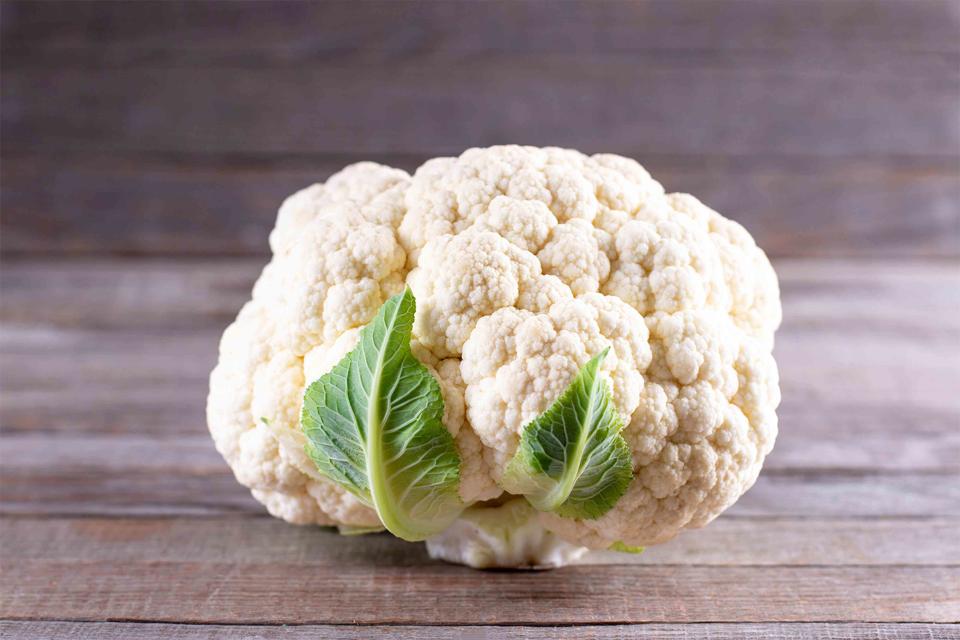The Right Way to Store Cauliflower So It Stays Firm and Fresh
Whether precut, florets, or whole, here's how to safeguard your cauliflower's snappy texture and savory taste.

Qwart / Getty Images
Cauliflower is a cruciferous chameleon. It can be roasted till caramelized, finely chopped into "rice" for stir-fries or pizza crust, pureed into a creamy soup, or paired with pasta, to name a few of its many applications. But how do you store cauliflower to keep it fresh for as long as possible so you can serve it as a delicious side or as the main event in plant-forward meals? If not stored properly, crunchy, firm cauliflower can lose its oomph and flavor appeal. We asked experts to share some of the best—and easiest—ways to keep it fresh, allowing you to enjoy every floret.
Meet Our Expert
Richard LaMarita, chef-instructor of plant-based culinary arts at the Institute of Culinary Education's New York campus
Donald Russo, category manager of produce at Baldor Specialty Foods
Shopping for Cauliflower
A cool-weather vegetable, cauliflower thrives in the spring and fall. The densely packed heads, called curds (or florets), are, in fact, white flower buds that never reach the floral stage. Though typically white, the curds can also be green, purple, or orange. Romanesco, another variety, has smaller florets and a slightly sweeter taste. The entire vegetable is edible, even the tough outer skin of the stems.
Cauliflower is sold whole, including the head, green leaves, and stalks. You can also buy sealed bags of trimmed, precut, and quartered cauliflower florets. Look for firm heads or pieces, free of brown spots, and skip florets that seem crumbly to the touch.
How Long Cauliflower Lasts
Some vegetables, like spinach, seem to droop the moment you leave the store. Not resilient cauliflower. “Cauliflower is a pretty tough vegetable and a whole head can last about 7 to 10 days in the fridge," says Richard LaMarita, chef-instructor of plant-based culinary arts at the Institute of Culinary Education's New York campus.
Whole cauliflower lasts longer than cut. Bagged precut cauliflower florets, for example, have a duration of 3 to 5 days. "Once cauliflower is cut, the surface area exposed to the air increases, which can lead to faster moisture loss," says Donald Russo, category manager of produce at Baldor Specialty Foods.
How to Store Cauliflower
Whether a whole head or cut into florets, cauliflower should be stored in your refrigerator's crisper drawer.
Whole vs. Cut
If you buy it whole, you can store it intact, or you might consider cutting it up: "Whole cauliflower is bulky and may take up more space in the refrigerator, compared to cut-up pieces, which can also be more convenient for a busy consumer," says Russo. But if you cut the whole head into florets, remember it will not last as long.
To Rinse—Or Not
While cauliflower feels dry to the touch, it actually contains a lot of moisture. Moisture is why LaMarita never rinses cauliflower before tucking it into the crisper. “This vegetable has a lot of cracks and crevices that will be very hard to dry, and the moisture will cause it to go bad faster," he says.
So don't wash cauliflower before you store it—but do wash it before you prep and cook it. Russo points out that since most cauliflower is harvested fresh from the field, it needs to be rinsed free of dirt or debris before consumption.
How to Wrap Cauliflower for the Refrigerator
How cauliflower is packed plays a big role in how long it lasts. "Store packaging is usually tightly wrapped around the cauliflower so it won't be able to breathe," says LaMarita. So forgo the store shrinkwrapping, here's how the experts handle whole heads and florets:
Whole Cauliflower
Remove the original shrinkwrap and place the head in a looser bag with an opening or perforation so moisture can escape, says LaMarita.
The stem side should face upwards to prevent moisture from building up on the curds.
Florets
Florets should be stored in the same way. And while you can keep precut cauliflower in its original bag, it still needs air, so poke a few holes in it with a sharp knife.
Russo places a few dry paper towels in the bag to absorb excess moisture and prevent spoiling. "It's important not to add too many or to wrap the product; it needs some airflow to stay fresh," he says.
Freezing Cauliflower for Longer Storage
If you have too much cauliflower on hand (one head can go a long way), stow it in the freezer, but first, follow these preliminary steps:
Blanch (or quickly boil) cauliflower before freezing to preserve the flavor, color, and texture, says Russo.
Next, shock the vegetable in cold water to further extract the moisture.
Drain it, then place it in airtight freezer bags.
Cutting the head into florets makes for easier freezer storage.
Why You Can't Freeze Raw Cauliflower: "If you just freeze it directly, the moisture in the cauliflower will start breaking down the cell walls, and when you eventually cook it, it will be mushy," says LaMarita.
How Long Frozen Cauliflower Lasts: Cauliflower can be kept frozen for about a year.
Another Way to Make Cauliflower Last Longer: Pickling
Pickling cauliflower is another way to extend it's life, says LaMarita. "Cut the cauliflower into florets, quickly blanch them, tehn add them to pickling liquid (boiled first then chilled)"
How to Revive Limp Cauliflower
If your once-crisp cauliflower has gone rubbery due to poor storage, there may be a way back. Try immersing it in cold water for about 30 minutes to help revive it—or incorporate it as an ingredient. "You can't reverse this completely, but you can try briefly steaming it, adding it into cooked dishes with other ingredients, blending it into a sauce, or using it as a filler in a recipe such as a casserole or patties to avoid wasting it," says Russo.
Read the original article on Martha Stewart.

